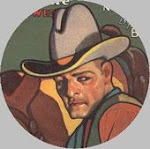He was a true entrepreneur. He launched the New York Rangers franchise of the National Hockey League in 1926. He owned the team until his death.
Tex was the primary force behind building the third incarnation of Madison Square Garden in 1925. It was located at Eighth Avenue between 49th and 50th Streets in Manhattan.
Rickard was an innovator. Between 1921 and 1927, Tex raised the popularity of boxing by promoting a number of fights for “The Manassa Mauler,” world heavyweight champion Jack Dempsey. For the Dempsey-Charles Carpentier bout in 1921, Tex was responsible for the first live radio broadcast of a title fight and the first million-dollar fight.
Tex promoted the July 4, 1910 Fight Of The Century in Reno, Nevada, between former heavyweight champion and “Great White Hope” Jim Jeffries and reigning heavyweight Jack Johnson. 15,760 fans paid $270,775 to watch the bout. Tex sold the film rights to the match for $101,000.
In 1906, while running a saloon in Goldfield, Nevada, Tex organized the first boxing matches in that state.

After moving to Alaska in 1895 during the Gold Rush, Tex earned and lost several fortunes. As owner of The Northern Saloon in Nome, he befriended famous lawman and gunman Wyatt Earp. And in 1900, he met down-on-his-luck bareknuckle boxer Jean St. Vrain—an encounter that would lead to a very different sort of fight.
You can read about the results of their meeting in FIGHTING ALASKA, a Fight Card book, now in paperback, by clicking here.









